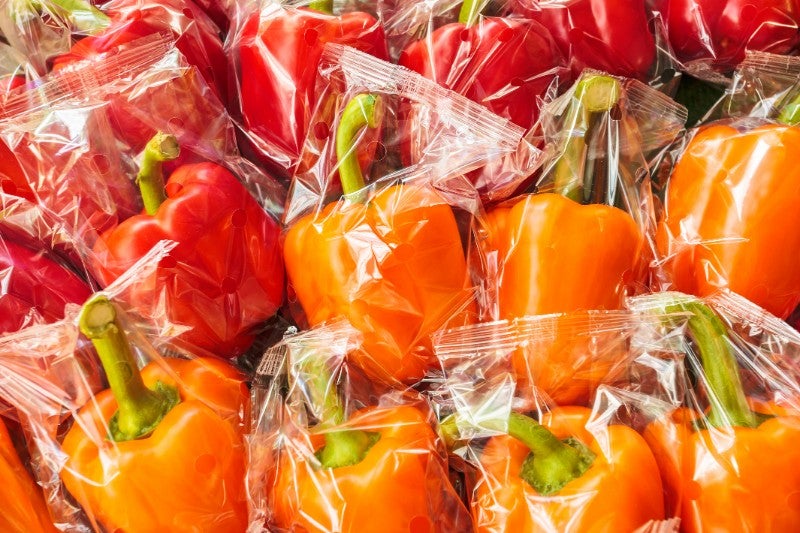
Ipsos is a multinational market research team headquartered in Paris, France. Its recent white paper, ‘Clean, Green and Affordable’, written by Ian Payne, Greg Clayton and Alex Baverstock, explores how food packaging will involve “balancing competing tensions” – including sustainability, hygiene, and value – post-pandemic.
Packaging Gateway spoke with paper co-author and Ipsos global service leader of pack testing Ian Payne to find out more about how the pandemic has changed priorities in the food packaging industry and how packaging companies should be balancing competing tensions post-pandemic.
Jessie Paige: Has sustainability taken a “back seat” amid Covid-19 or are we still seeing just as much demand for it?
Ian Payne: People continue to believe that they will act responsibly. In mid-April for example, 79% of a global audience claimed that they will seek out products that are healthier and better for the environment. We also see waste continue to be a top environmental concern, at a similar level to global warming and air pollution.
These attitudes have been built and reinforced over years so, even though our actions as consumers are not necessarily consistent, our positive attitudes towards the importance of sustainability appear to be maintained. It’s likely the case, therefore, that although we all have something hugely significant to deal with, our underlying values with respect to sustainability are not necessarily impacted by this new issue.
JP: Have hygiene concerns led to worsened sustainability?
IP: We have to consider the reality of what sustainability means for the typical consumer. In practice, it means avoiding products which have a lot of packaging. That is what is top of mind for consumers in terms of their actions on climate change. For example, it’s something which they can easily control and demands much less of a sacrifice than giving up meat, dairy and other types of behaviour change. It also means continuing to follow the rules in terms of sorting the rubbish correctly and putting things in the right container.
This is the reality of acting sustainably for a lot of people. In a large part, people can still exercise their level of responsibility even with heightened concerns on hygiene brought about by Covid-19. Of course, there will be differences – more takeaway and home delivery mean more waste. Not being able to use your reusable mug in the coffee shop means more single-use, but it would be wrong to consider hygiene concerns are pushing out sustainability concerns.

US Tariffs are shifting - will you react or anticipate?
Don’t let policy changes catch you off guard. Stay proactive with real-time data and expert analysis.
By GlobalDataJP: Despite the pandemic causing hygiene concerns, your research suggests that hygiene and sustainability are only secondary concerns. Why do you think that is?
IP: I think the large majority of consumers surveyed are used to shopping in clean store environments and buying products from trusted brands or indeed private labels from trusted retailers. They can control where and how they shop, but when it comes to the products they buy, there’s no real choice at shelf with respect to hygiene. It’s therefore not a choice driver so ends up as a secondary concern in comparison to an issue like price, for example, where there is a choice. Lower consumer confidence driven by concerns about employment prospects may also be contributing to rising price as a concern.
This is not a new phenomenon. It’s the same issue with sustainability. If we’re concerned about single-use plastics at the level we claim – 71% agree that ‘single-use plastics should be banned as soon as possible’ – then why continue buying the products we do? It’s because there is not a viable alternative without compromise. We’ve got other priorities and we’re making decisions quickly in-store. So although it’s there in our attitudes, it doesn’t necessarily manifest in the way we might expect.
JP: What is the one thing consumers are looking for in food packaging now and why?
IP: While it’s impossible to definitively pinpoint one exact feature right now, whatever it is, it is likely not that different from what it was before the pandemic. We ran a study in May in the UK to test out a variety of claims including some quite strong new to the world ideas, including some fictitious ones.
While Covid-19 has disrupted many things, what was striking was that the winning claims rather highlighted that consumers remain true to established beliefs. The top three claims, for example, related to wholesome/natural, biodegradable packaging and no additives. More broadly, we should also acknowledge that we generally buy what’s in front of us – physically or digitally. We haven’t seen evidence of people demanding different products or packaging.
JP: You say that companies which successfully balance hygiene, sustainability, and value are the most likely to be successful. What steps should businesses be taking to become more balanced?
IP: Sustainable business practices remain relevant even in the height of Covid-19, as illustrated by people’s attitudes to health and the environment. In that context, those companies which can continue to drive better environmental outcomes in the face of reduced consumer confidence and increased sensitivity to hygiene have an opportunity to build themselves long-term reputational equity and better chances of success.
In the same way that manufacturers, retailers and suppliers have been demonstrating a commitment to change with respect to plastics, for example, there’s a responsibility to communicate clearly with consumers and to avoid the temptation to deliver artificial benefits related to hygiene.
One in three consumers believes that Covid-19 can be spread by boxes and packages received from other countries. It’s important to communicate the reality to consumers, not least so the focus can be on where the real risks of transfer are. I think we all play a part in that because of the trust that brands and retailers garner. There is opportunity for increased engagement with consumers who for the first time might be discussing supply chain issues because of their own out-of-stock experience.



